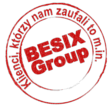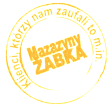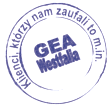What do we need to know about filling and emptying tanks?

ADR - what does it mean?
At the outset, it is worth explaining the acronym ADR. To be precise, it is the name of the international agreement on the carriage of dangerous goods and loads, which was concluded in 1957 in Geneva. Poland signed this convention in 1975 and must therefore comply with the conditions set out therein. The regulations governing the transport of dangerous goods are also laws and an EU directive. All of these stipulate that the person transporting must have a licence.
A few words about dangerous goods
Products that can be considered hazardous include various types of gases, explosives, infectious materials, corrosives, as well as flammable liquids. The latter sounds serious, and we can include everyday goods in this category, such as perfume, alcohol or nail varnish. You can see, therefore, that it is necessary to be mindful even of such things. Other materials classified as hazardous include materials that are radioactive, poisonous, organic, spontaneously combustible and produce inflammable gases when in contact with water. Also involved are materials that are not considered hazardous, but are filled under pressure. These, too, require a licence to transport. This category includes, for example, fertilisers, oils, but also cement or flour.
UNO tanks
Another abbreviation - UNO - stands for tank filling and emptying equipment. This can be a flexible reloading hose. Its main component is a flexible hose, and it has connectors and ends attached to it. Further such devices are reloading arms, specifically those with which we fill a tank at a pressure of more than 0.5 bar. Loading arms are also placed on seaports. This allows ships to be filled with dangerous goods. Maintenance of UNO equipment is necessary for its proper functioning.
Technical supervision
Technical supervision is required for equipment for filling and emptying tanks under pressure. This is carried out by the Transport Technical Supervision. The TDT is an authority which also requires training and an examination. Only then can we legally and safely fill tanks, nozzles and other such containers. What should a person operating UNO equipment know? First and foremost, he or she must have knowledge of their technical parameters. Also, one should be familiar with hazardous materials - their specifics and physical and chemical properties.
Health and safety is fundamental
When filling tanks, it is necessary to be familiar with health and safety regulations. Another important aspect is fire regulations. This is the basis for safe operation on site. A lack of knowledge of health, safety and fire regulations can lead to various accidents on the job site. Training in this area is essential for filling and emptying UNO-type tanks.
Designation of dangerous goods
In addition to the classification of products considered hazardous, it is important to label them appropriately. Each such substance must be marked separately, as required by the ADR agreement. Such a label is an orange-coloured plate, divided into two parts. At the top is the HIN, or hazard identification number. It is made up of at least two numbers - one indicating the state of aggregation (gas or liquid) and the other indicating what happens to it. There may also possibly be an X, which indicates that the product must not come into contact with water, as a very strong reaction may occur. At the bottom of the plate is the UN number. This is used to identify the material in question. The specific substance should have a corresponding number. For example: petrol has the number 1203 and ammonia 1005.
Carriage by different modes of transport
Depending on where the hazardous materials are being transported, there are different carriage requirements. Just as the ADR Convention defines the carriage of these goods in road transport, this is defined in rail transport by another regulation - the RID. These are appended to the Convention on International Carriage by Rail. There is a provision for the appropriate labelling of goods and other requirements. If we are transporting products of this type by sea, this is where the IMDG Code comes into play, which sets out the relevant guidelines for carriage. If these are not met, there is a danger of hazardous materials entering the water and poisoning it. This is also defined by the SNS Convention. Air transport requires special requirements set out by DGR regulations. These are enforced by almost the entire world, so compliance with them is essential.
UNO tank filling training
As mentioned earlier - in order to be able to fill dangerous goods tanks fully legally and safely, it is necessary to obtain authorisations. These are granted by the Transport Technical Supervision. It is worth knowing that a training course must be taken for this purpose. In order to approach it, you must have at least a vocational training. If you have a skilled worker's certificate instead, this will also be useful. In addition to this, you need to be at least eighteen years of age. The most important thing, however, is to apply for the exam at the TDT. This body also prepares and supervises the exam - a special committee is appointed for this. Passing the exam ensures a licence that is valid for life.
By now, all the facts about pressure vessel filling and emptying equipment should be known. If you want to take a training course, you need to make sure that you take it at a trusted training centre. Our company provides such a course, which complies with the requirements of the Transport Technical Supervision. Feel free to contact us benefit from our services.































